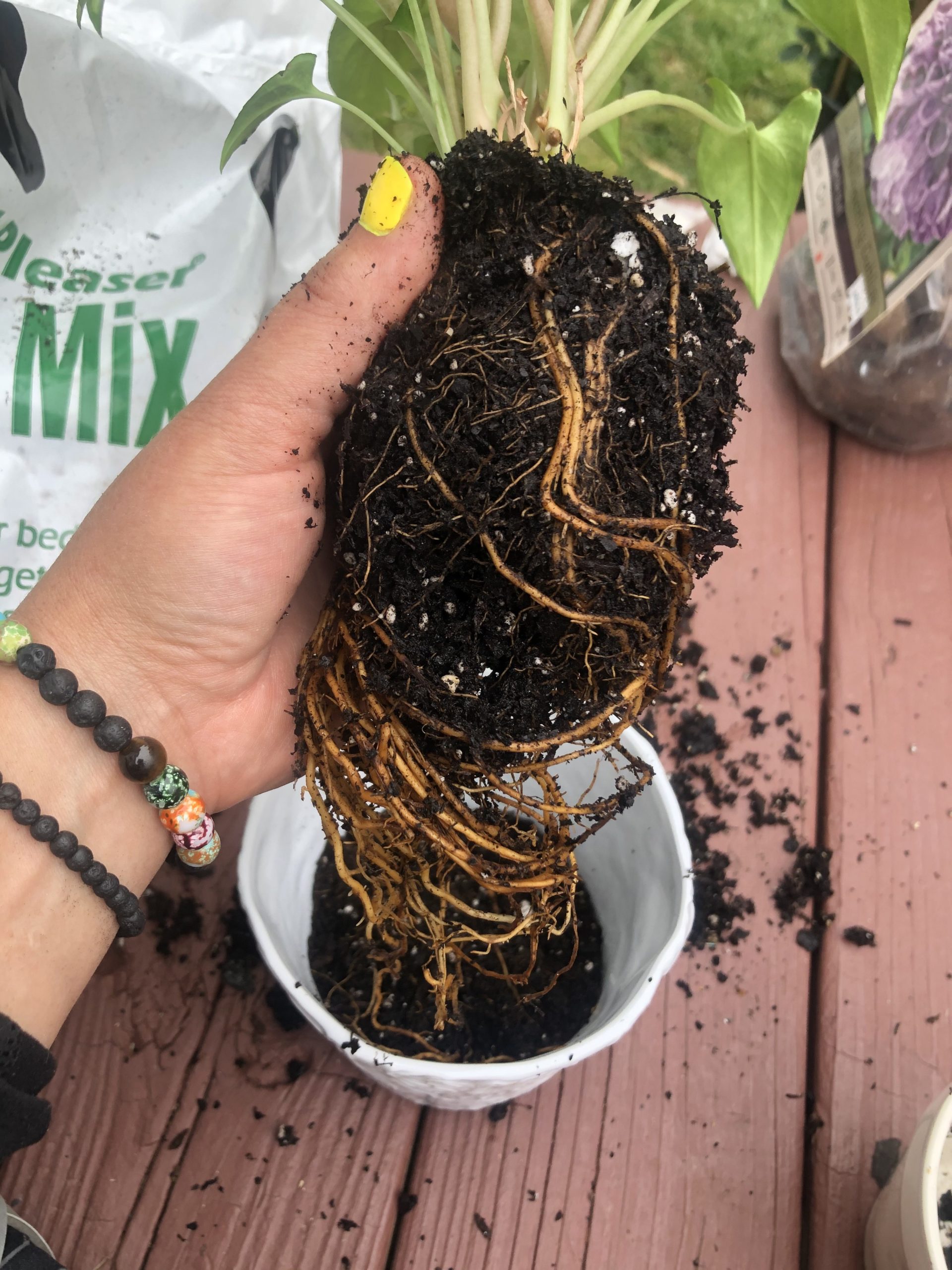Many houseplants like to stay in the pot they were bought in, sometimes for years, but from time to time, your plant will get large enough or root bound enough that it is time to replant. Or your plant might have babies that need to start their own home. There are a few signs that it is time to replant:
- The plant has grown too large for its pot (if it is top heavy or just looks disproportionate).
- There are roots growing out of the drainage holes.
- It seems to be pushing itself out of the pot (indicating too many roots don’t have anywhere to go).
- Your plant is growing slower than you think it should be, based on previously observed growing habits. (Do some research about your plant if you aren’t sure how much it is likely to grow in a year.)
- The plant seems a lot thirstier than normal.
Preparing Your Plant for Repotting
Once you have made the decision to repot, here are the steps you should take:
DISCLAIMER: The following steps are general suggestions. There are LOTS of different houseplant varieties and some are more particular about soil types, drainage, etc. Do your research about your plant variety before repotting.
- Measure the diameter of the pot your of overgrown houseplant.
- Choose a pot that is NO MORE than 2 inches larger in diameter than the pot it is currently in. You never want to plant a 4 inch plant in a 10 inch planter (or something like that). You might think this will help the plant to grow bigger faster–it WON’T. Likely it will cause the opposite effect. Trust us.
- Gently remove the plant from its pot. If it is in a plastic pot, you may be able to gently squeeze the sides to loosen it to remove it. If it is in pottery, and you can’t get it out, don’t pull on the plant. Take a thin, sharp knife and go around the pot, keeping the blade as flush with the sides of the pot as possible. You don’t want to cut the roots. This should allow you to gently remove the plant. Be careful of roots growing out the bottom of the pot.
- Loosen the roots. Be gentle, but don’t be afraid that you will kill the plant by doing this. Loosening the roots will allow it to be happier in its new home.
- Remove some of the old soil. You will want to freshen the soil of your plants from time to time. Since you already have this guy out of the pot, just go ahead and do that.
Preparing the New Pot and Potting
- If the new pot does not have a drainage hole, we recommend adding a ½ inch to 1 inch of marbles or pebbles at the bottom of the pot. This will keep the roots from sitting in water.
- Put a layer of new soil in the bottom of the new pot. Place the plant in the pot and make sure the base of the plant (where the soil will come up to) is about a ½ inch to an inch from the rim of the pot. You want to leave room for watering. (Use a good potting soil mix. We LOVE Daddy Pete’s Organic Potting Soil, but again, refer to the disclaimer we included at the beginning of this list).
- Fill around the plant with fresh soil. Gently press the soil in as you add it. Do not pack it down too much or you may not leave enough air for the plant to “breathe”.
- Tap the pot gently down on a hard surface to get rid of any air pockets. Add more soil if necessary.
- Water your newly planted plant.
- Sit back and admire your work. Enjoy a beverage if you want.
When Not to Repot
Just remember that you don’t want to just repot a houseplant for the sake of repotting it. Houseplants rarely NEED to be repotted right after leaving our store. You might have found a cute pot to go with your plant, and of course, we hope you did. What we suggest:
- Choose a pot that is nearly the same size as the nursery pot. Remove the plant from the nursery pot and safely place it in the pottery. Do not go up in size when first purchasing unless an associate recommends it or you absolutely know the plant needs a larger pot.
- Wait at least a week before removing the plant from its nursery pot. You want to give the plant some time to get used to its surroundings before disturbing it.
- Check and see if the nursery pot will fit into the pottery. No repotting required. This makes for easy watering if you have a pot without drainage.
We love helping you with all things plant related, so if you have any questions about repotting your houseplant, don’t hesitate to send us a message, give us a call, or visit us in store. Happy planting, friends!

